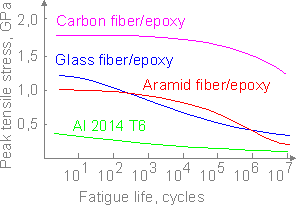 Composites demonstrate a high resistance to fatigue crack growth. The fatigue strength of many composite materials is higher than for aluminum alloys.
Composites demonstrate a high resistance to fatigue crack growth. The fatigue strength of many composite materials is higher than for aluminum alloys.
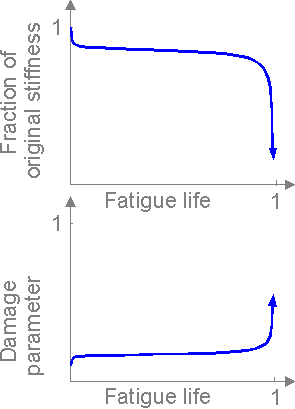 At the first stage of cycling the В«weakВ» fibers are broken. The composite does not fail at this stage due to redundancy of strength. Delaminations and microstructural bond damages occur over a long period of time. At the final stage, the number of broken fibers increases catastrophically.
At the first stage of cycling the В«weakВ» fibers are broken. The composite does not fail at this stage due to redundancy of strength. Delaminations and microstructural bond damages occur over a long period of time. At the final stage, the number of broken fibers increases catastrophically.
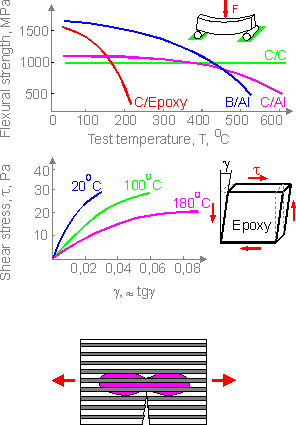 Industrial fibers are less sensitive to high temperature than epoxy or plastics. Carbon fibers demonstrate unique properties.
Industrial fibers are less sensitive to high temperature than epoxy or plastics. Carbon fibers demonstrate unique properties.
Zone of non-linear deformation in the crack tip - zone of plasticity occurs in the matrix only.
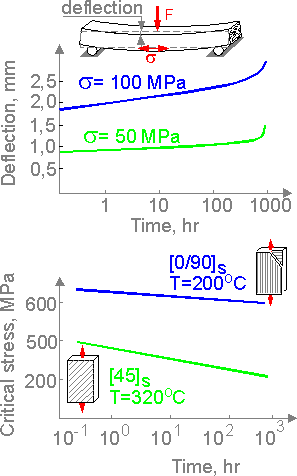 Creep rate increases as nominal stress increases. The ductility of the matrix contributes significantly to the creep effect. Reinforcement by strong and rigid fibers along the direction of the force leads to higher creep strength.
Creep rate increases as nominal stress increases. The ductility of the matrix contributes significantly to the creep effect. Reinforcement by strong and rigid fibers along the direction of the force leads to higher creep strength.
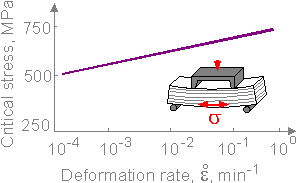 Glass fiber becomes more brittle and weaker at the В«explosiveВ» deformation rate - small values of the parameter.
Glass fiber becomes more brittle and weaker at the В«explosiveВ» deformation rate - small values of the parameter.
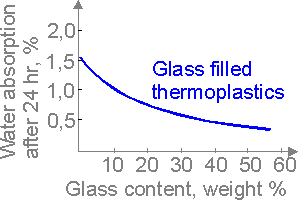 Water absorption of glass-filled thermoplastics decreases as glass content increases. Water absorption decreases strength of the composite.
Water absorption of glass-filled thermoplastics decreases as glass content increases. Water absorption decreases strength of the composite.
 2015-08-13
2015-08-13 306
306








